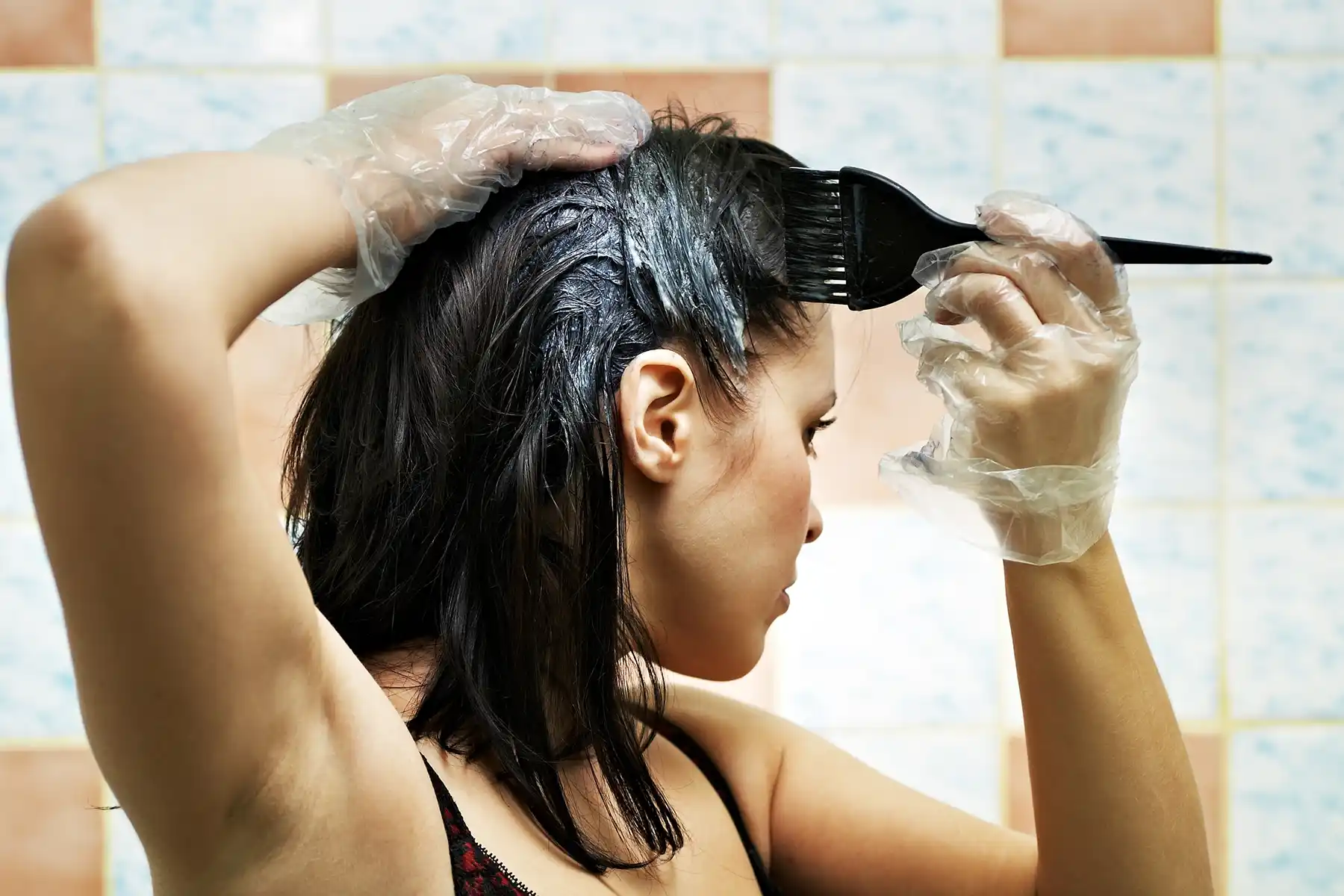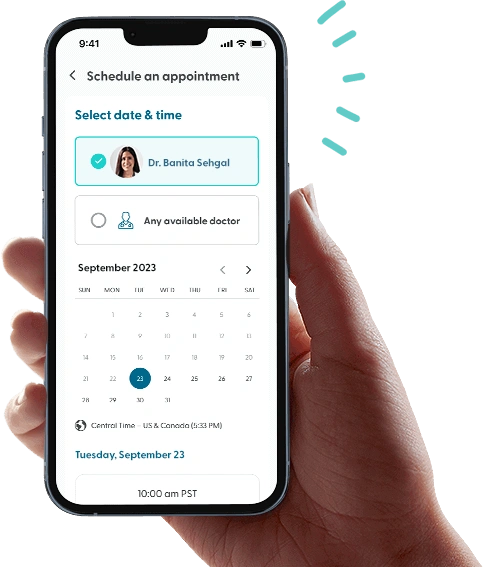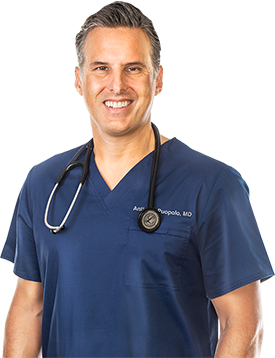Does Hair Dye Kill Lice?

Head lice outbreaks are common, particularly among school children who account for over 19% of infestations in the United States.
Infestations can be difficult to handle, especially if you’re unsure about the most effective way to eradicate lice.
In this article, we’ll explore a lesser-known treatment option: hair dye.
Read on to discover how hair dye may help you treat lice and learn about the potential risks involved to ensure you take proper care of your and your family’s scalp health.
How Do You Get Lice?
Lice are tiny insects that live on the hair or close to the scalp and feed on human blood.
They are most commonly found in children and are highly contagious, usually spreading through direct contact with the hair of an infected person.
Lice are also transmitted through sharing personal items, like hats, brushes, and headgear, though this is rare.
Traditional treatments for lice
Over-the-counter (OTC) pediculicides
OTC remedies are usually the first-line treatment for lice and can be effective for mild to moderate cases. These options may include:
-
Permethrin lotion (1%): Available as a lotion or shampoo, this is one of the most common OTC lice treatments. Permethrin is safe and effective for most people and can be used by children older than two months.
-
Pyrethrins with piperonyl butoxide (PBO): These are natural insecticides that are derived from chrysanthemum flowers and can be used to kill live lice. However, they can’t be used to kill lice eggs (nits). A second application is usually necessary seven to 10 days after the first treatment to kill any newly hatched lice.
Prescription medications
For more severe infestations or when OTC products aren’t effective, your doctor may recommend prescription medications.
These remedies are more aggressive than OTC options, which may make them more effective at killing lice. Common prescription medications include:
-
Malathion (0.5% lotion): Approved for people six years of age and older, malathion is highly effective because it kills live lice and some nits. It’s applied to the hair, left to dry naturally, and washed out after 8 to 12 hours.
-
Benzyl alcohol lotion (5%): This treatment suffocates the lice but does not kill the eggs. After about a week, a second treatment is required to kill any newly hatched lice. It’s approved for children as young as 6 months.
Manual lice removal treatment
Alongside using OTC or prescription medications, manually removing lice can help you overcome an infestation. You can also use this method on its own.
This removal method involves using a fine-toothed lice comb and brushing it through wet, conditioned hair to physically remove lice and nits.
Manual removal can be time-consuming, but it can be a great alternative to using hair dye chemicals on the scalp.
If done correctly, it can also ensure the complete removal of all lice and eggs without requiring a second treatment.
How Can Hair Dye Help Kill Lice?
Although hair dye isn’t a medically approved treatment for lice, limited research indicates that it could help remove insects from the scalp. Here’s how this works.
Chemical composition of hair dye
Most permanent hair dyes contain ingredients like ammonia and hydrogen peroxide.
These chemicals penetrate the hair shaft and cause oxidation, which affects the lice’s normal habitat. This makes it harder for the insects to live and breed in your hair.
Since lice have an exoskeletal structure, they may be vulnerable to the harsh chemicals found in hair dye.
Ammonia and hydrogen peroxide could potentially suffocate live lice and dissolve the ‘glue’ produced by nits that help them to attach to the hair shaft.
However, no evidence indicates how hair dye affects lice eggs and if the chemicals can kill the nits.
Limitations and concerns
While there are individual reports that claim hair dye is effective at removing lice, there is currently no scientific evidence to support this.
Using hair dye specifically to treat head lice can also raise concerns for your scalp and hair health, as persistently applying chemicals to the area can cause irritation and inflammation.
Before using hair dye to kill lice, you should understand all the risks involved. We’ll look at these in more detail later on.
Methods for Using Hair Dye to Kill Lice
If you want to use hair dye as a treatment for lice, take the necessary steps to help enhance its efficacy. Here are some things you can do:
-
Start with a vinegar wash: Clean your entire scalp with a water and vinegar solution mixed at a 1:1 ratio. Work it into your hair by massaging your head, and pay special attention to the nape of the neck and the area behind the ears. Let it sit on your scalp for five to 15 minutes before rinsing with warm water. If you experience a burning sensation while washing your hair, rinse the solution off immediately.
-
Use a lice comb on wet hair: Using a fine-toothed comb, remove as many nits and live lice as possible from your scalp. Clean and soak the lice comb in boiling water to ensure it’s completely free of lice and nits before reusing it.
-
Mix and apply hair dye: Follow the package instructions for mixing and applying your hair dye once you’ve combed your hair. Then apply it to your scalp and ensure that you work it into your hair using the same method as with the vinegar solution.
-
Rinse your hair thoroughly: Let the hair dye sit on your hair for the recommended time period before rinsing it thoroughly. It’s also recommended to comb your hair with a clean lice comb again to help remove lice and nits.
-
Blow dry your hair: Use a hot hair dryer to dry your hair and help kill off any lice left behind.
Keep in mind that hair dye doesn’t repel lice and it won’t prevent an infestation if you come into contact with these insects again.
To remain lice-free, monitor your scalp and regularly use a lice comb to help reduce your chances of reinfestation.
Considerations When Using Hair Dye to Kill Lice
Safety precautions
Applying permanent hair dye to your scalp can cause chemical changes to the hair that may result in adverse reactions. Watch out for the following symptoms:
- Itching
- Burning
- Redness
- Swelling
- Hives or wheals
If you experience any of these symptoms, avoid using hair dye and consult a medical professional about more effective lice treatments.
You may also develop these side effects if you use harsh hair dye products — like hair bleach — more than once a month.
When using these products, keep your face, skin, and hands protected from chemicals to avoid potentially permanent damage.
This can include wearing protective gloves, a face mask, and even safety goggles to avoid contact with the hair dye.
Hair dye is not recommended for use in children, because their hair is finer and their scalps are more prone to permanent damage.
Risks of using hair dye as a lice treatment
Since hair dye isn’t a medically approved treatment for lice, several risks come with using it as such. These include:
-
Generally ineffectiveness at killing and removing nits from the hair, which can increase the likelihood of reinfestation
-
Chemical burns and scalp irritation
-
Allergic reactions, which can lead to anaphylactic shock in extreme cases
-
Damaged, brittle, and over-processed hair
Using hair dye to treat lice may also give you a false sense of security, which can lead to a delay in getting more effective and safer treatments.
This can prolong a lice infestation and lead to increased discomfort, including persistent scalp irritation and self-esteem issues.
Can You Prevent Getting Lice?
There are several easy strategies that can minimize your chances of contracting lice. These may include:
-
Regularly checking your own hair and scalp, as well as those of your family members for lice and nits
-
Encouraging children to refrain from sharing personal items that touch their heads, such as hats, scarves, and brushes
-
Avoiding close contact with individuals who may have a lice infestation
-
Ensuring that each family member uses their own hair care tools, including combs, brushes, and styling tools
-
Regularly cleaning hair care tools to prevent the spread of lice
-
Using lice-repellent sprays that contain natural ingredients like tea tree oil and lavender
-
Regularly using preventative shampoos and conditioners to avoid infestations
-
Regularly washing bedding, stuffed animals, clothing, and other fabric items in hot water to remove lice and nits
If there is a lice outbreak in your community, take proactive steps to prevent an infestation.
These strategies can help you and your family avoid lice, but you should also seek proper treatment if anyone does become infested.
When Should You See a Doctor About Lice?
You can handle lice infestations at home using OTC remedies. However, there are certain conditions where it’s advisable to consult your doctor, such as:
-
Persistent infestations despite treatment and completely removing lice and nits from the hair
-
Having children with lice infestations, as many OTC treatments aren’t suitable for all ages
-
Having sensitive skin or conditions like eczema or scalp lesions
-
Developing signs of a secondary infection, including redness, swelling, pus, or increased pain
-
Experiencing an allergic reaction to lice treatments
You should also speak to your doctor if you have concerns about lice treatments and infestations or if you require guidance on preventing future outbreaks.
Your doctor can recommend appropriate treatment strategies to help you overcome lice infestations.
Where Can You Learn More About Maintaining a Healthy Scalp?
If you suspect that you may have developed an infection from lice or if you’re concerned about your symptoms, LifeMD may be able to help.
A team of medical professionals can assist you with medications, prescriptions, and advice to cope with uncomfortable symptoms caused by lice, including scalp irritation or inflammation.
Make your appointment today to get started.
More articles like this
Feel better with LifeMD.
Your doctor is online and ready to see you.
Join LifeMD today and experience amazing healthcare, discounted labs and prescription medications... plus around-the-clock access to medical guidance.



